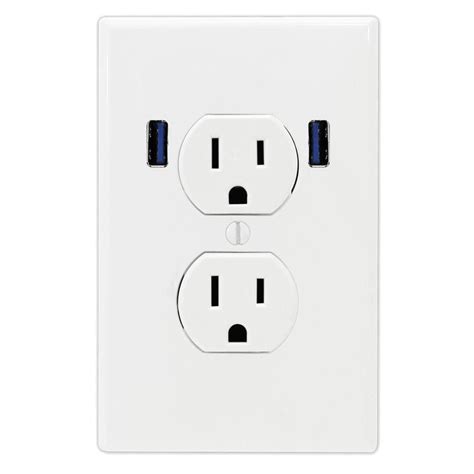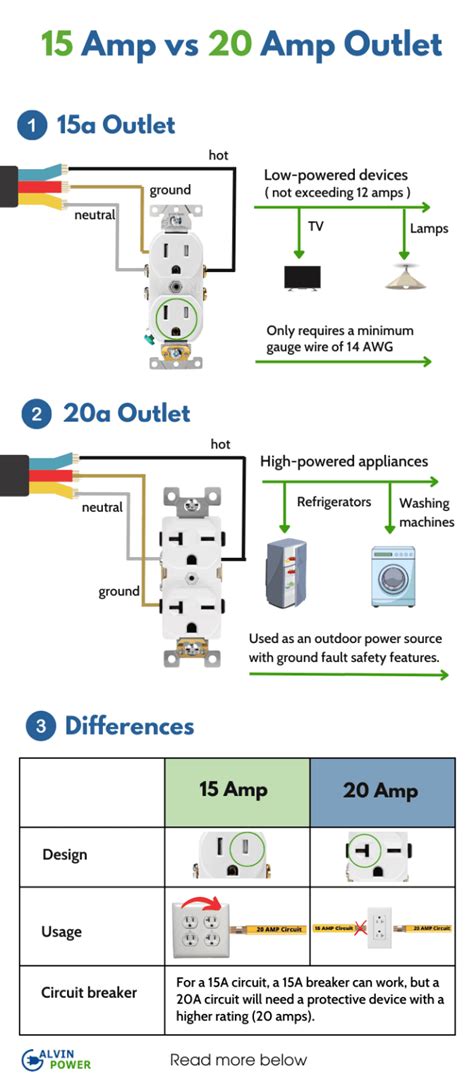15 vs 20 electric box 15 amp outlets operate on 14 AWG wires, while 20 amp outlets use at least 12 AWG. The higher the wire gauge, the lower the amps. Because a 15A outlet only needs 14 . The majority of house keys are made out of a combination of nickel and silver, or brass. While most keys come in either silver or brown colouring, they are able to be plated in assorted colours as well.
0 · electrical outlets 15 amp
1 · difference between 20 amp and 15a
2 · 20 amp receptacle
3 · 20 amp outlet vs 15 amp
4 · 20 amp outlet rating
5 · 20 amp outlet circuit
6 · 20 amp electrical outlet
7 · 15 amp to 20 amp outlet
Sheet metal is metal formed into thin, flat pieces, usually by an industrial process. Thicknesses can vary significantly; extremely thin sheets are considered foil or leaf, and pieces thicker than 6 mm (0.25 in) are considered plate, such as plate steel, a class of structural steel.
15 amp outlets operate on 14 AWG wires, while 20 amp outlets use at least 12 AWG. The higher the wire gauge, the lower the amps. Because a 15A outlet only needs 14 .
Here, we will understand the basics of both 15 Amp and 20 Amp Outlets. After that, we will find the differences between them by comparing 15 Amp vs 20 Amp Outlets against their typical use cases, power, wire sizes, and .
electrical outlets 15 amp
difference between 20 amp and 15a
The majority of households in the U.S. use 120-volt electric circuits that allow both 15 amp and 20 amp current intensity. Due to this blend, it is important to know what you are working with whenever you need to install . In your outlet installation, consider a 15 vs 20 amp breaker. For a 15A circuit, a 15A breaker can work, but a 20A circuit will need a protective device with a higher rating (20 . Understanding the differences between 15-amp vs. 20-amp outlets is crucial for optimizing your home’s electrical system. While 15-amp outlets are ideal for general-purpose . To help you improve the electrical system in your home, we have created an outline of the differences between 15 amp vs 20 amp outlets and the benefits of each. Can You Run a 15 Amp Outlet on a 20 Amp Circuit? 15 amp .
Here we describe matching 15-Amp receptacles to 15-Amp circuits, 20-Amp receptacles to 20-Amp circuits, two-wire receptacles where no ground is present, GFCI and AFCI electrical receptacles, and the proper electrical box to hold . A 15 Amp outlet costs between and , while a 20 Amp outlet costs between and . Fifteen Amp outlets are much more affordable than 20 Amp ones and require less expensive 14-gauge wires. As a result, the .15-amp outlets are designed to handle a maximum load of 15 amps, while 20-amp outlets can handle up to 20 amps. 20-amp outlets have a horizontal slot, while 15-amp outlets have a . One thing that trips people up is the difference between 15-amp and 20-amp outlets, aka receptacles. They sell both kinds at home centers and hardware stores, so how do you know which one goes where? This guide can help.
15 amp outlets operate on 14 AWG wires, while 20 amp outlets use at least 12 AWG. The higher the wire gauge, the lower the amps. Because a 15A outlet only needs 14 AWG, it can easily replace a 20A outlet. However, a 20A outlet cannot replace a 15A outlet without replacing the circuit. Here, we will understand the basics of both 15 Amp and 20 Amp Outlets. After that, we will find the differences between them by comparing 15 Amp vs 20 Amp Outlets against their typical use cases, power, wire sizes, and many other important parameters. The majority of households in the U.S. use 120-volt electric circuits that allow both 15 amp and 20 amp current intensity. Due to this blend, it is important to know what you are working with whenever you need to install new appliances, and thus to understand the 15 amp vs 20 amp outlet debate.
In your outlet installation, consider a 15 vs 20 amp breaker. For a 15A circuit, a 15A breaker can work, but a 20A circuit will need a protective device with a higher rating (20 amps). Moreover, when your circuit is in a humid or wet environment, use a GFCI outlet or breaker . Understanding the differences between 15-amp vs. 20-amp outlets is crucial for optimizing your home’s electrical system. While 15-amp outlets are ideal for general-purpose areas, 20-amp outlets are better suited for kitchens, garages, and other high-demand spaces. To help you improve the electrical system in your home, we have created an outline of the differences between 15 amp vs 20 amp outlets and the benefits of each. Can You Run a 15 Amp Outlet on a 20 Amp Circuit? 15 amp and .
Here we describe matching 15-Amp receptacles to 15-Amp circuits, 20-Amp receptacles to 20-Amp circuits, two-wire receptacles where no ground is present, GFCI and AFCI electrical receptacles, and the proper electrical box to hold and mount these devices. A 15 Amp outlet costs between and , while a 20 Amp outlet costs between and . Fifteen Amp outlets are much more affordable than 20 Amp ones and require less expensive 14-gauge wires. As a result, the overall installation is more cost-effective, which is why they are so popular.15-amp outlets are designed to handle a maximum load of 15 amps, while 20-amp outlets can handle up to 20 amps. 20-amp outlets have a horizontal slot, while 15-amp outlets have a vertical slot. 20-amp outlets are required in certain areas, such as kitchens and bathrooms, where larger appliances may be used. What is 15-amp Outlet? One thing that trips people up is the difference between 15-amp and 20-amp outlets, aka receptacles. They sell both kinds at home centers and hardware stores, so how do you know which one goes where? This guide can help.
20 amp receptacle
15 amp outlets operate on 14 AWG wires, while 20 amp outlets use at least 12 AWG. The higher the wire gauge, the lower the amps. Because a 15A outlet only needs 14 AWG, it can easily replace a 20A outlet. However, a 20A outlet cannot replace a 15A outlet without replacing the circuit. Here, we will understand the basics of both 15 Amp and 20 Amp Outlets. After that, we will find the differences between them by comparing 15 Amp vs 20 Amp Outlets against their typical use cases, power, wire sizes, and many other important parameters. The majority of households in the U.S. use 120-volt electric circuits that allow both 15 amp and 20 amp current intensity. Due to this blend, it is important to know what you are working with whenever you need to install new appliances, and thus to understand the 15 amp vs 20 amp outlet debate. In your outlet installation, consider a 15 vs 20 amp breaker. For a 15A circuit, a 15A breaker can work, but a 20A circuit will need a protective device with a higher rating (20 amps). Moreover, when your circuit is in a humid or wet environment, use a GFCI outlet or breaker .
Understanding the differences between 15-amp vs. 20-amp outlets is crucial for optimizing your home’s electrical system. While 15-amp outlets are ideal for general-purpose areas, 20-amp outlets are better suited for kitchens, garages, and other high-demand spaces. To help you improve the electrical system in your home, we have created an outline of the differences between 15 amp vs 20 amp outlets and the benefits of each. Can You Run a 15 Amp Outlet on a 20 Amp Circuit? 15 amp and .
Here we describe matching 15-Amp receptacles to 15-Amp circuits, 20-Amp receptacles to 20-Amp circuits, two-wire receptacles where no ground is present, GFCI and AFCI electrical receptacles, and the proper electrical box to hold and mount these devices.
A 15 Amp outlet costs between and , while a 20 Amp outlet costs between and . Fifteen Amp outlets are much more affordable than 20 Amp ones and require less expensive 14-gauge wires. As a result, the overall installation is more cost-effective, which is why they are so popular.


20 amp outlet vs 15 amp

20 amp outlet rating
20 amp outlet circuit
20 amp electrical outlet
I hate mounting system & junction box on 5xx2H/7xx2.. Usually You can loosen the screw to correct the camera position only 2-3 times.. After that the screw is good for nothing.
15 vs 20 electric box|20 amp receptacle